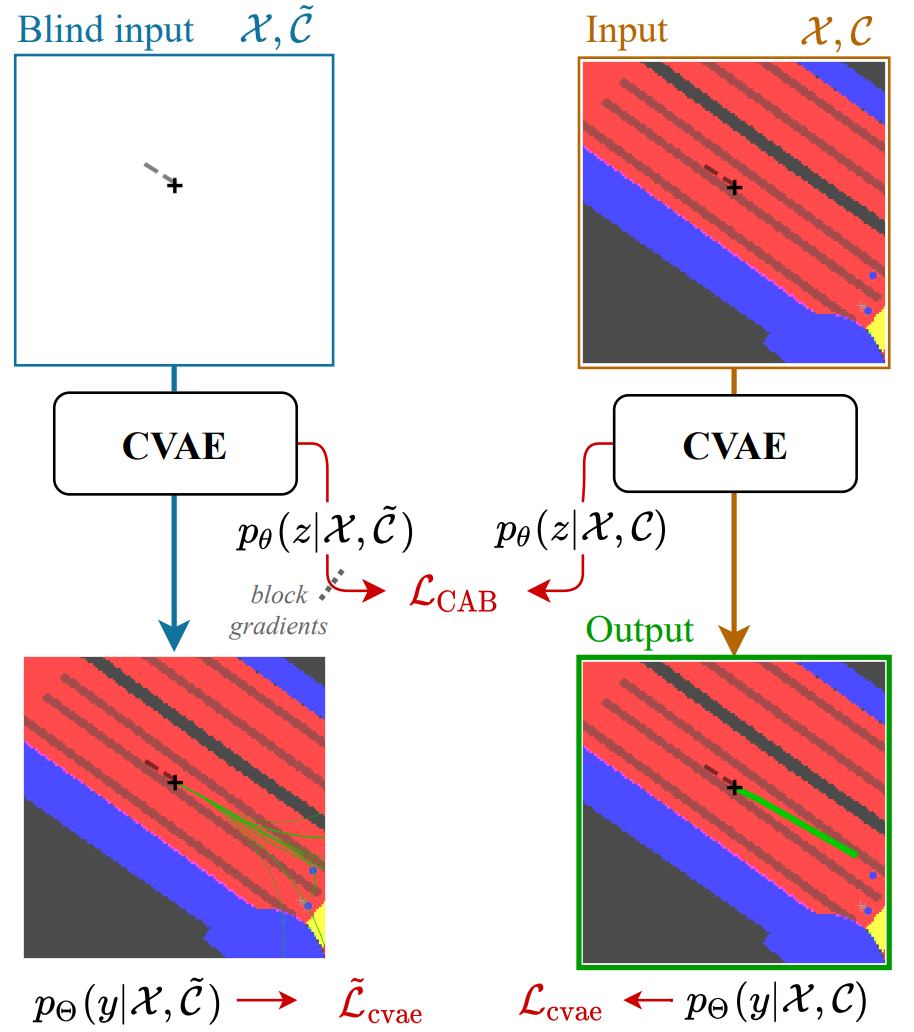Raising context awareness in motion forecasting
Hédi Ben-Younes, Éloi Zablocki, Mickaël Chen, Patrick Pérez, Matthieu Cord
CVPR Workshop on Autonomous Driving (WAD) 2022
Abstract
Learning-based trajectory prediction models have encountered great success, with the promise of leveraging contextual information in addition to motion history. Yet, we find that state-of-the-art forecasting methods tend to overly rely on the agent's current dynamics, failing to exploit the semantic contextual cues provided at its input. To alleviate this issue, we introduce CAB, a motion forecasting model equipped with a training procedure designed to promote the use of semantic contextual information. We also introduce two novel metrics, dispersion and convergence-to-range, to measure the temporal consistency of successive forecasts, which we found missing in standard metrics. Our method is evaluated on the widely adopted nuScenes Prediction benchmark as well as on a subset of the most difficult examples from this benchmark.
BibTeX
@inproceedings{cab2022,
author = {Hedi Ben{-}Younes and
{\'{E}}loi Zablocki and
Micka{\"{e}}l Chen and
Patrick P{\'{e}}rez and
Matthieu Cord},
title = {Raising context awareness in motion forecasting},
booktitle = {CVPR Workshop on Autonomous Driving (WAD)},
year = {2022}
}
